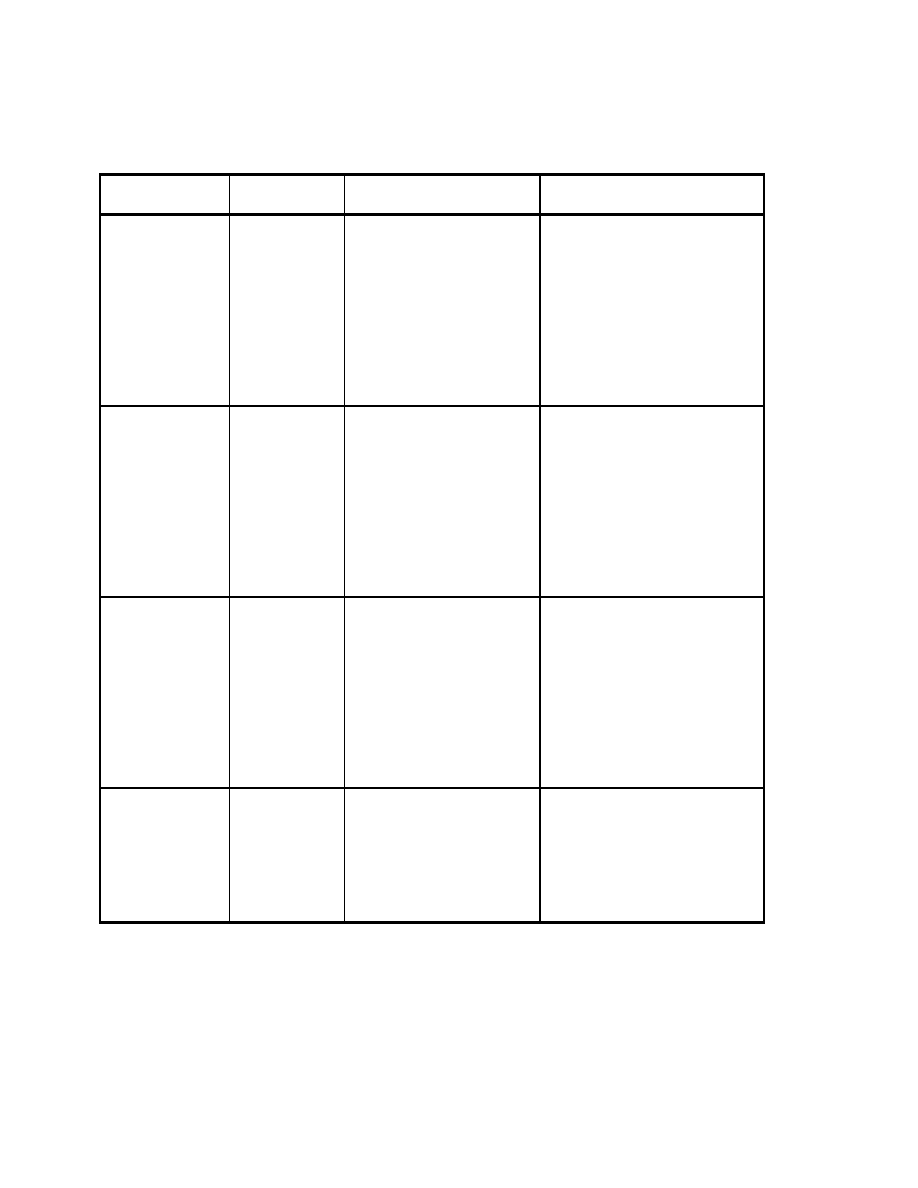

4
Table 1.
Summary of Technical Targets and Barriers for Reducing
Friction and Wear
Friction and Wear
Challenge
Current
Practice
Practice
Technical Target
Barriers
Cost of
validation
testing
validation
testing
Engine tests
costing
approximately
$60,000 each
costing
approximately
$60,000 each
Inexpensive, predictive
bench-top tests for
cylinder-liner and piston-
ring materials, bearings,
and valve-train
components
bench-top tests for
cylinder-liner and piston-
ring materials, bearings,
and valve-train
components
Lack of quantitative
understanding of failure
modes.
Lack of understanding of time-
dependent in-situ
contamination and degradation
of lubricants.
Lack of model to predict
performance based on material
properties and design features.
understanding of failure
modes.
Lack of understanding of time-
dependent in-situ
contamination and degradation
of lubricants.
Lack of model to predict
performance based on material
properties and design features.
Cost-effective
surface-
modification
technologies
surface-
modification
technologies
Limit
performance
based on bulk-
material
properties
performance
based on bulk-
material
properties
Coatings or other surface
treatments to allow fuel
injectors, pistons, cylinder
liners, and valve-train
components to tolerate
higher stresses, lower
lubricity, and higher
corrosivity resulting from
new emission-reduction
technologies
treatments to allow fuel
injectors, pistons, cylinder
liners, and valve-train
components to tolerate
higher stresses, lower
lubricity, and higher
corrosivity resulting from
new emission-reduction
technologies
High cost of current coatings
and surface-modification
technologies.
Limited wear resistance,
durability, and adhesion.
and surface-modification
technologies.
Limited wear resistance,
durability, and adhesion.
Lubricant and
additive
chemistry
additive
chemistry
Trial-and-
error approach
to lubricant
formulation
error approach
to lubricant
formulation
Develop environmentally
friendly lubricant that is
compatible with new
emission-reduction
technologies
friendly lubricant that is
compatible with new
emission-reduction
technologies
Need model to predict long-
term performance of lubricants
based on properties of base oil
and additives.
Need for sulfur and
phosphorus for high-pressure
applications, but deleterious
effect of sulfur and phosphorus
on catalysts.
Disposal or biodegradability.
term performance of lubricants
based on properties of base oil
and additives.
Need for sulfur and
phosphorus for high-pressure
applications, but deleterious
effect of sulfur and phosphorus
on catalysts.
Disposal or biodegradability.
Comprehensive
computer codes
computer codes
Fragmented
codes unable
to handle
lubricated
parts in
relative
motion
codes unable
to handle
lubricated
parts in
relative
motion
General-purpose
friction/wear/lubrication
codes that include splash
and mist lubrication for
designing low-friction,
low-emission lubricated
components and systems
friction/wear/lubrication
codes that include splash
and mist lubrication for
designing low-friction,
low-emission lubricated
components and systems
Extremely complex system.
Lack of quantitative
understanding of friction and
wear as a function of basic
material properties and loading
conditions.
Lack of quantitative
understanding of friction and
wear as a function of basic
material properties and loading
conditions.
Each team should have expertise in materials, coatings, lubricants, design, and service life
evaluation because all five factors are interrelated and need to be considered to achieve an
optimal solution for most friction and wear problems.
evaluation because all five factors are interrelated and need to be considered to achieve an
optimal solution for most friction and wear problems.
The recommended budget for the first year is $2 million, rapidly increasing to $7 to $10 million
per year for four to five years, supplemented by appropriate industry matching funds. It is
per year for four to five years, supplemented by appropriate industry matching funds. It is